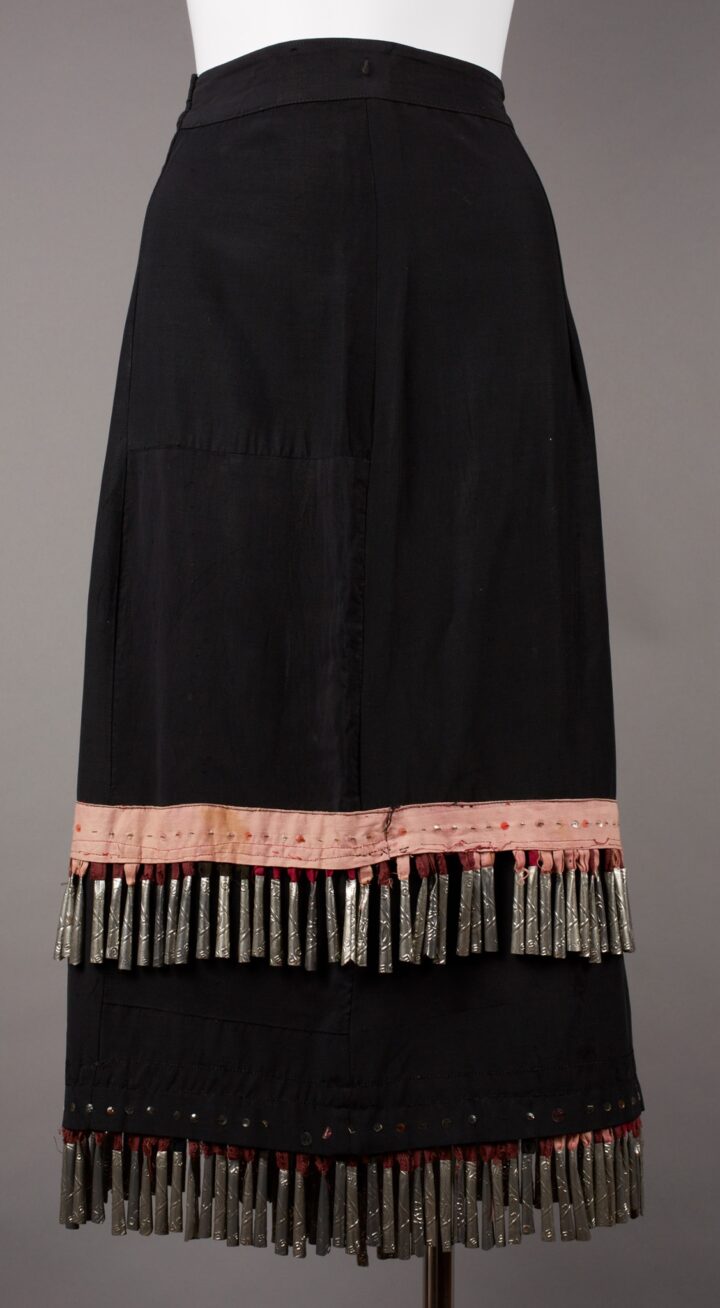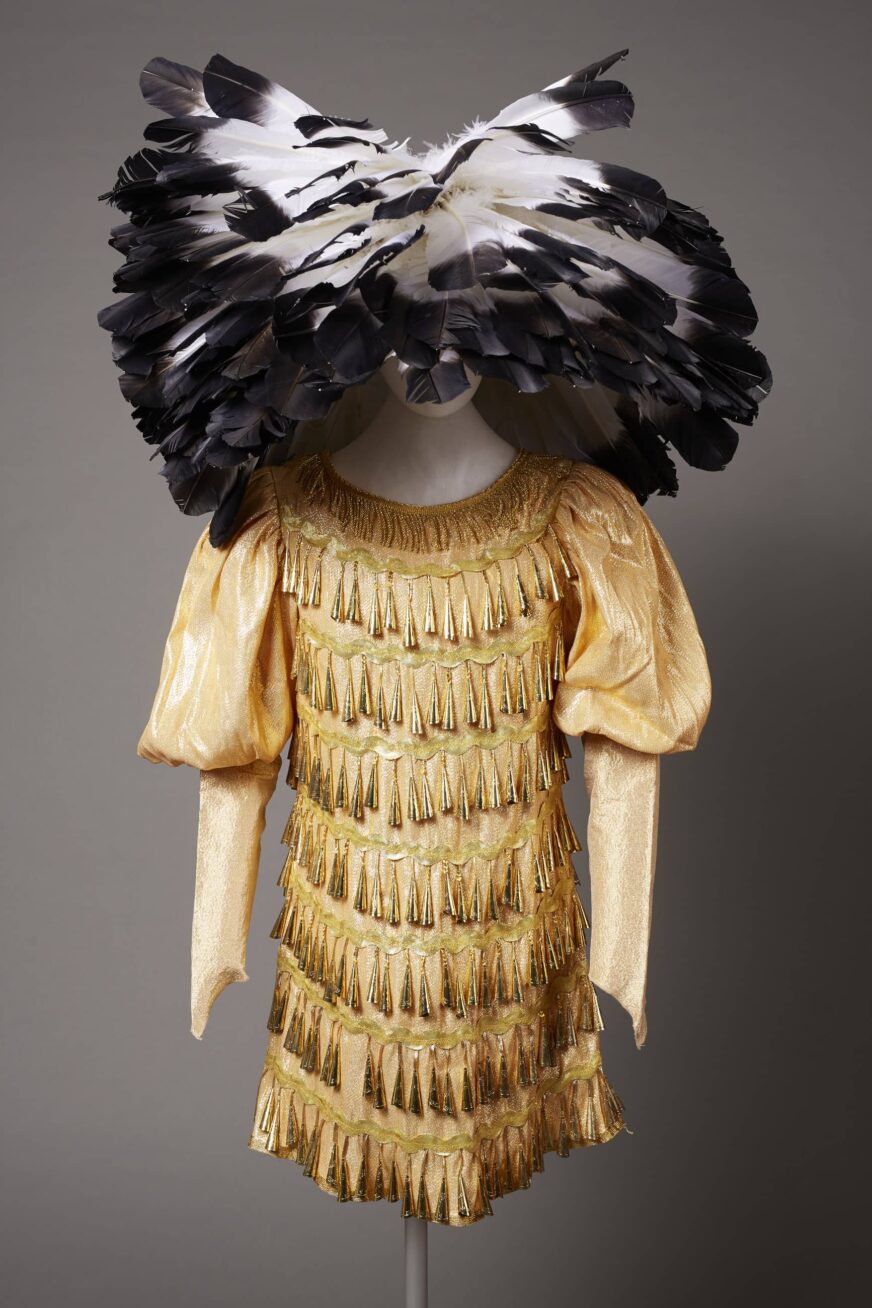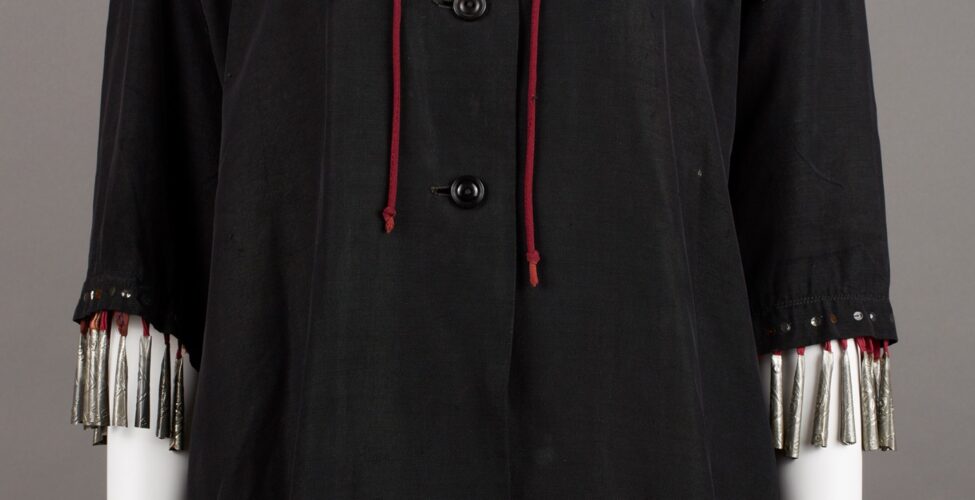The jingle is a symbol of Native North American women. This blouse with matching skirt, a possible precursor to the jingle dress, is an example of the ingenuity of Native design. This type of dress adornment and dance was first developed to heal and has continued to be a symbol of healing and female empowerment. While cone-shaped copper was found in the Great Lakes region during the early 18th century, oral history accounts trace the jingle dance and dress’s beginnings to multiple Ojibwe communities sometime around the 1918 influenza pandemic (1918–1920). Learn more from this video:
Like other Indigenous practices, the dress style and dance that began with the Anishinaabe is now widely practiced by Native peoples of various tribal affiliations. The metal cones, or jingles, originally made from curled copper and later tobacco tin lids, coins, and thimbles, are still made from repurposed materials by some makers, while others use pre-fabricated jingles. Compared to this blouse and skirt, many contemporary jingle dresses have become more colorful and acoustic with the addition of more metal cones and added design motifs that make each dress unique to the dancer.
Contemporary Native artists incorporate the jingle into other art forms. These include Anishinaabe artists such as Maria Hupfield (Wasauksing First Nation) and artists from other regions, such as Marie Watt (Seneca) and Wendy Red Star (Apsáalooke), who use the jingle in performance, and as an emblem of Native North American women’s presence anywhere from within the community to a vision of the future.
—Kendra Greendeer, ArtTable Fellow





